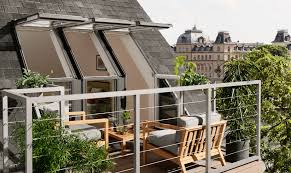When it comes to residential spaces and architectural designs, the terms “terrace” and “balcony” are often used interchangeably, but they refer to distinct features with unique characteristics. Both enhance the outdoor living experience, but understanding the differences between a terrace and a balcony can greatly influence the design, functionality, and overall aesthetics of a space.
Defining a Terrace:
A terrace is an outdoor space that is typically elevated and paved, often attached to a building or a house. Terraces can vary in size, ranging from small intimate spaces to sprawling expanses with gardens, seating areas, and even water features. They are commonly found on rooftops, offering panoramic views of the surroundings. Terraces are versatile, providing opportunities for various activities such as gardening, entertaining guests, or simply relaxing in an open-air environment.
Key Characteristics of Terraces:
- Elevation: Terraces are generally elevated platforms, providing a unique vantage point and a sense of openness.
- Size: Terraces tend to be larger than balconies, offering more space for diverse activities and landscaping.
- Accessibility: Terraces are often accessible from different rooms, providing an extension of indoor living spaces to the outdoors.
- Landscaping: Due to their size, terraces often allow for more elaborate landscaping and design elements, such as gardens, seating areas, and even outdoor kitchens.
Defining a Balcony:
A balcony, on the other hand, is a smaller, typically protruding platform that is attached to the exterior of a building. Balconies are usually positioned above ground level and can be enclosed by railings or balustrades for safety. While balconies may not provide as much space as terraces, they are valued for their intimacy and accessibility, often serving as a private outdoor retreat for residents.
Key Characteristics of Balconies:
- Size: Balconies are generally smaller compared to terraces, serving as more intimate spaces for relaxation and contemplation.
- Proximity: Balconies are often directly accessible from a room, providing a seamless transition between indoor and outdoor spaces.
- Privacy: Due to their smaller size and proximity to living spaces, balconies offer a more private outdoor experience.
- Design: Balconies are commonly designed as cantilevered projections from a building, providing a space for occupants to enjoy fresh air and outdoor views.
Conclusion:
In summary, terraces and balconies share the common purpose of connecting indoor and outdoor living spaces. They differ significantly in terms of size, elevation, accessibility, and design. Understanding these distinctions is crucial for architects, designers, and homeowners alike. As it influences the overall layout and functionality of a space. Whether you’re dreaming of a sprawling terrace with breathtaking views or a cozy balcony for quiet moments. Recognizing the unique qualities of each will guide you toward creating an outdoor space that suits your preferences and lifestyle.

